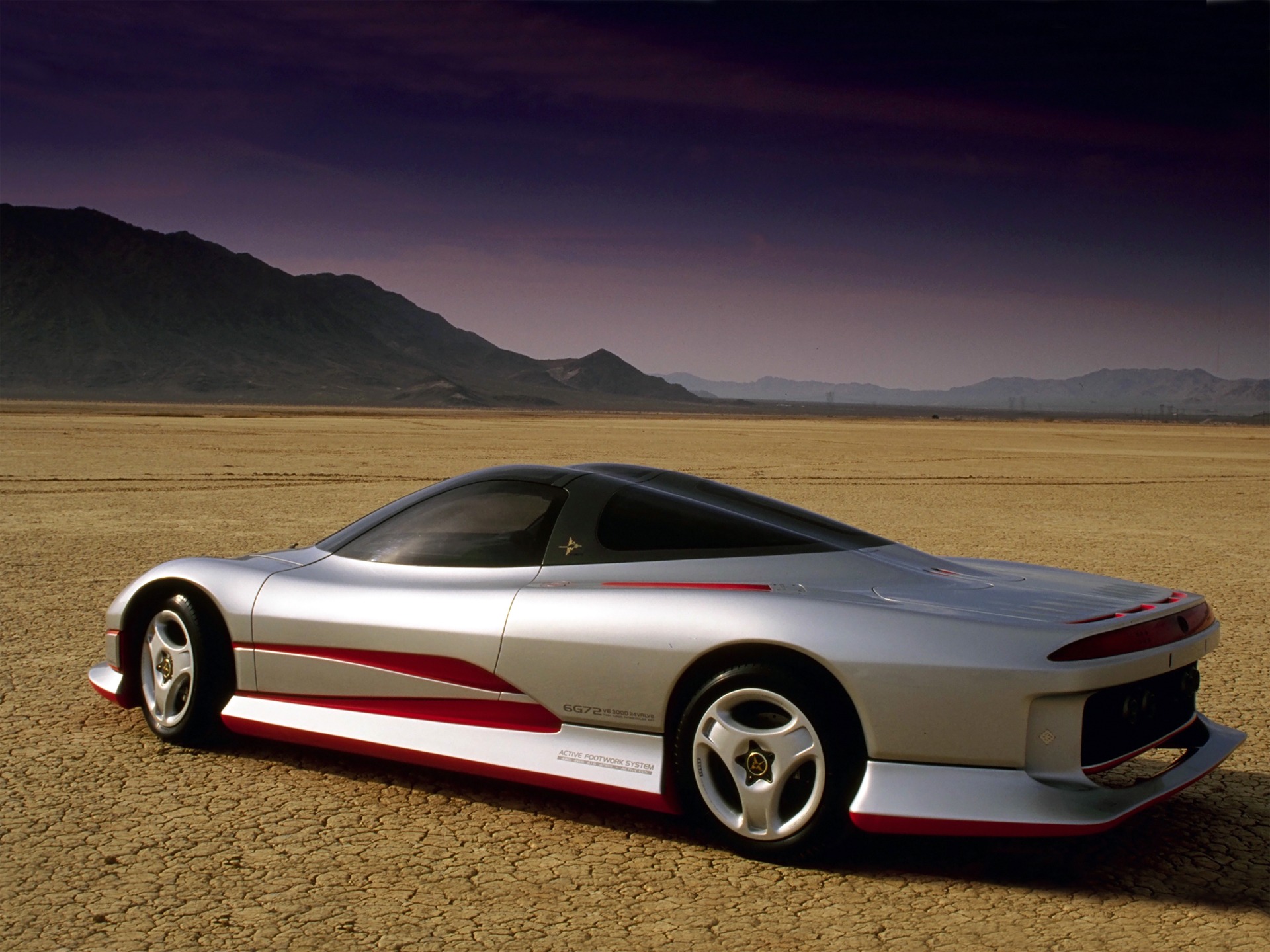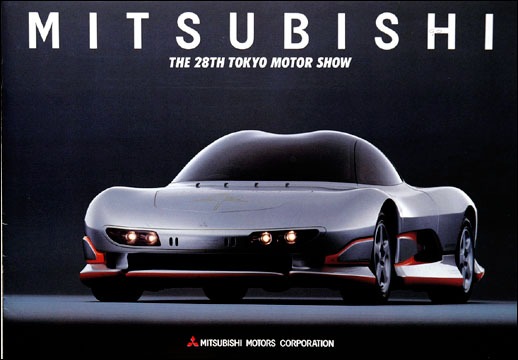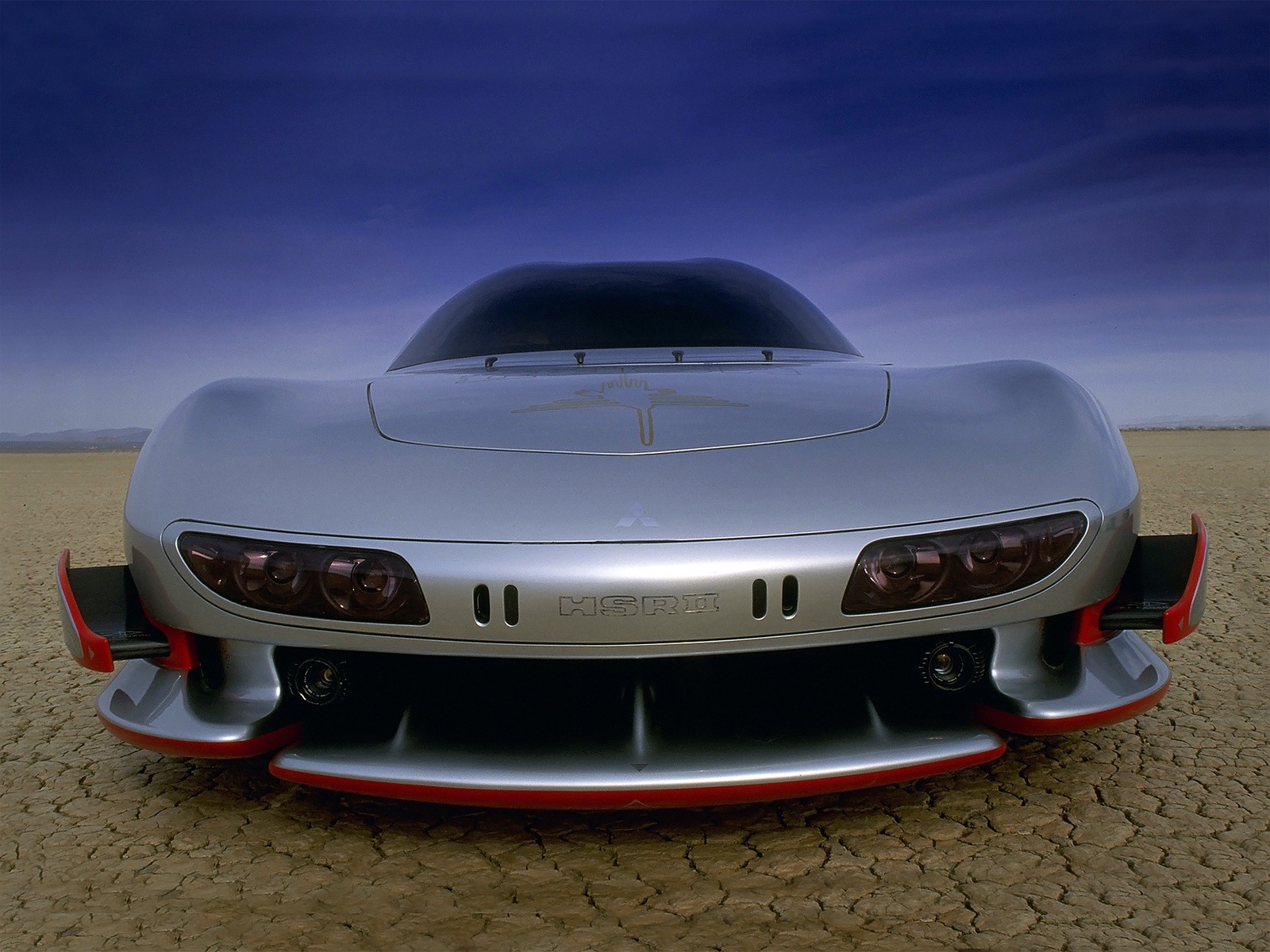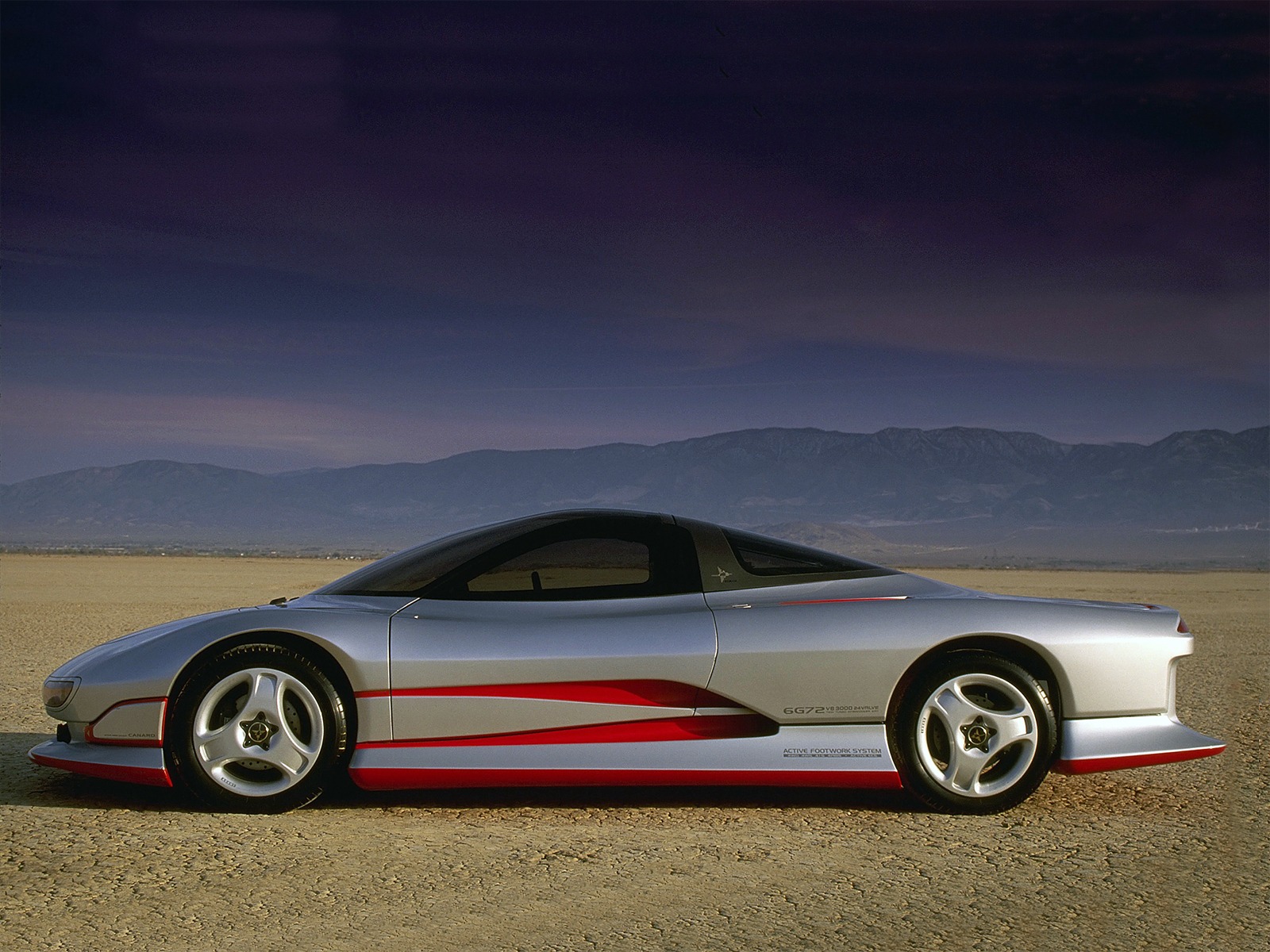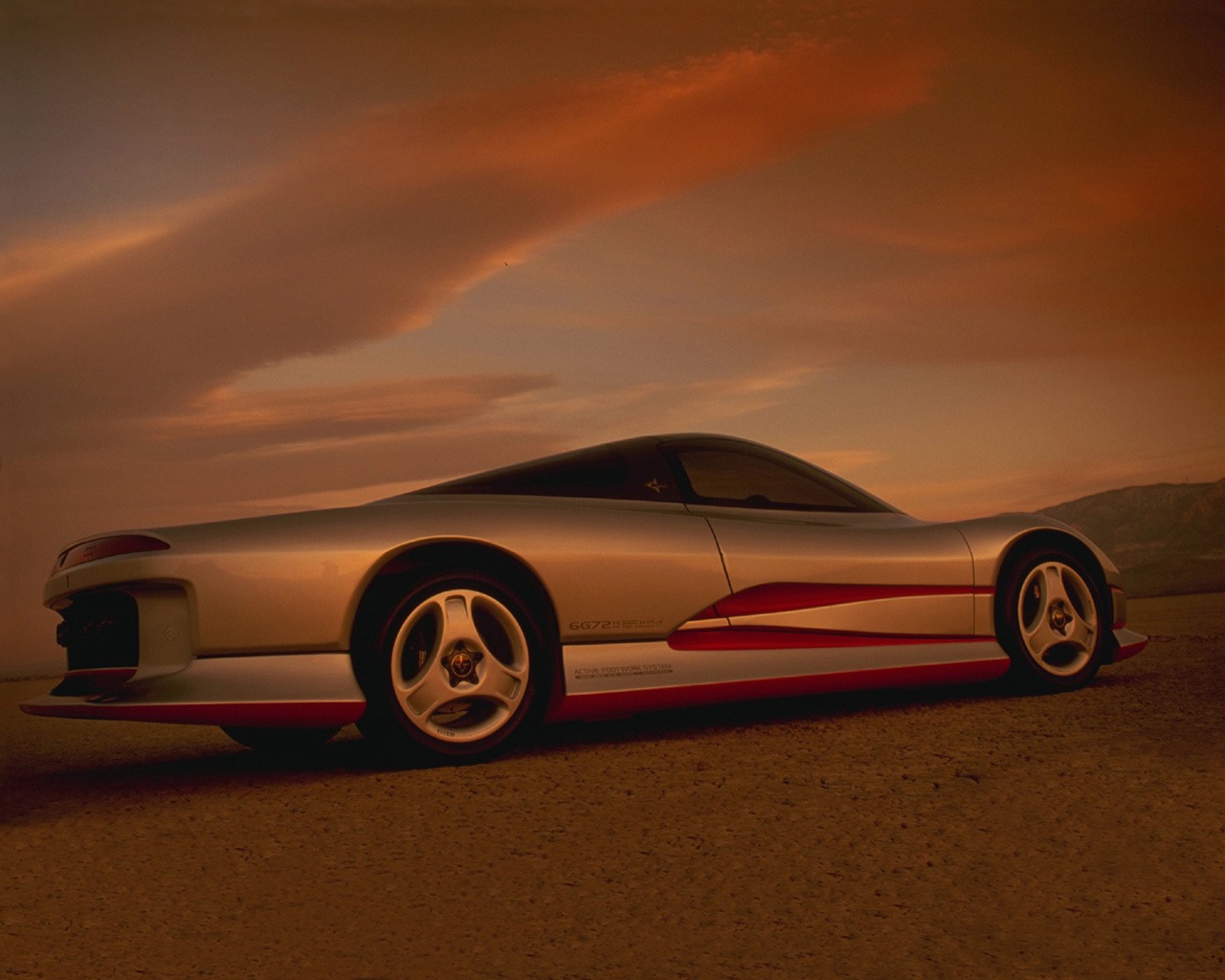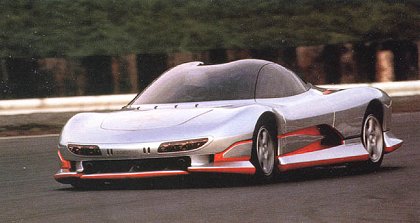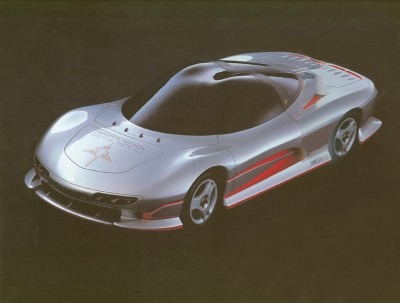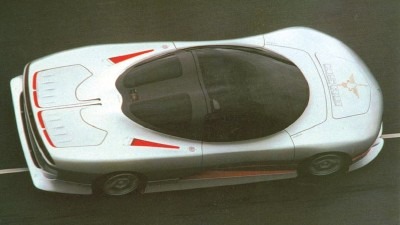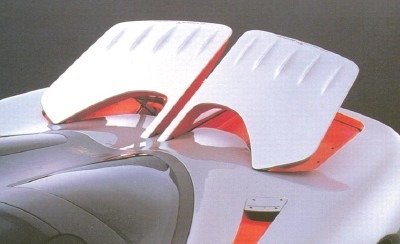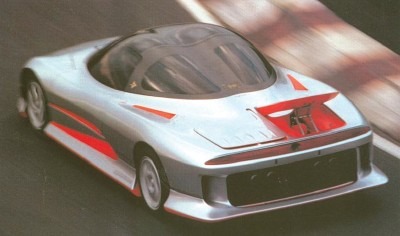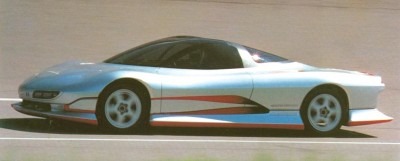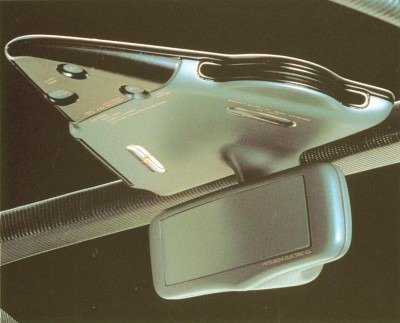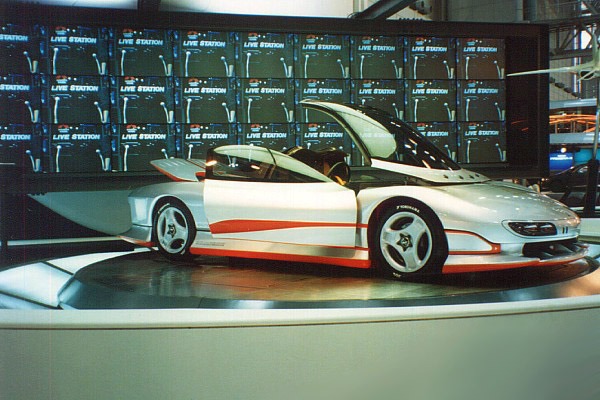The 1989 Mitsubishi HSR concept car body design was first seen in public at the Tokyo Motor Show, and the fully drivable car proved to be a virtual show-stopper.
Audiences at American exhibitions in 1989 cast a similarly excited eye at the bubble-topper’s organic, functional shape. Near-future drivers, they learned, might be “enclosed in a reinforced, space-age skin, with expansive visibility all around.” Better yet, they would revel in a “solid sense of confidence and well-being.”
Aerodynamics had been the buzzword in the auto trade for several years already, so the appeared to be the next logical step forward. Even showgoers who knew (and cared) little about a car’s coefficient of drag, not to mention the coefficient’s impact on high-speed stability and fuel efficiency, could imagine a vehicle like this barreling down tomorrow’s open highway — and probably without having to stop at every other gas pump along the way.
Sounded great, in theory. Onlookers might be excused for temporarily forgetting the traffic jams and crazed drivers they might have encountered on the way to the auto show. Dreams can’t be bothered by such tiresome realities.
In fact, what Mitsubishi created was not quite as futuristic as it appears. Many of its elements and features weren’t “maybe” devices at all, but real technological developments that were close to completion.
Several already existed in some form on contemporary cars. A number of HSR’s powertrain and suspension components, in fact, were shared with the company’s Galant and Eclipse models.
Mitsubishi’s Eclipse coupe, for instance — built at the new Diamond-Star plant in Illinois — benefited from the same research that produced the HSR. According to the company, the Eclipse gained a startlingly low drag coefficient of 0.294, along with the lowest frontal-lift coefficient of any production car.
Drag coefficient of the Mitsubishi HSR concept car itself dropped to an unheard-of figure of 0.2, an amount more appropriate in an airplane than a road vehicle. Moreover, the flowing form created a useful down-force that increased road-hugging capabilities at high speeds. It actually held tighter as speed rose, maneuvering as precisely at 200 miles an hour as at more modest velocities.
auto.howstuffworks.com

